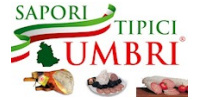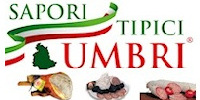The Piani di Colfiorito include Cesi, Popola, Annifo, Collecroce, Arvello, Ricciano and the Palude di Colfiorito marsh, all between 750 and 790 metres above sea level.
The Most Precious Resource of the Colfiorito Natural Park
Among Umbria's most important natural habitats, the water levels in this area remain virtually unaltered throughout the year.
This complex habitat contains a number of micro and macro ecosystems that make it the most important biological resource of the Parco Naturale di Colfiorito. The park itself is made up of 338 hectaires and is the smallest protected area in Umbria.
A particularly damp section of the park lies at 752 metres above sea level and was listed in 1976 as one of the damp areas of national interest at the Ramsar Convention on account of the plant and animal life that it supports. Since 1985 it has been recognised as a protected area by the region of Umbria. Recently the area was included in the European “Natura 2000” network of protected areas in Europe that support a biodiverse habitat.
The spring flowering season deserves a special mention both on account of the abundance of colours that it produces and the intense scent of the millions of flowers. Plants found rarely in Italy such as the common rush weed and the acquatic orchid grow here.
Under the Marsh
The geological formation of the Colfiorito area allows for no surface draining of the water, which either evaporates or runs into underground basins. The only drainage is an artificial one to the east, towards the Chienti river. The Colfiorito marsh is fed partly by rainwater and partly by underground springs, with the result that the water level changes little throughout the year. At the centre of the marsh the water is roughly 4 metres deep.
At the feet of mount Orve a large and clearly visible cavity of intensely coloured red rock, between 10 and 20 metres wide and roughly 5 metres deep, swallows up 20 litres of water a minute. From the 16th century onwards the cavity underwent a series of modifications in an effort to increase the amount of water it absorbed. Once the waters have been absorbed into the cavity the difference in levels between the waters inside and outside the cavity were made use of by Francesco Jacovilli in a mill built in 1570. Only the remains of this structure remain today, commonly known as Molinaccio.
Although less important, the second cavity for absorbing water is near Colfriorito and has been altered on several occasions by man. A number of water springs exist in this area and form a single stretch of water with the marsh in wintertime.
The Origin of Many Umbrian Springs
The Carsic conformation of the plateau is made up of tectonic movements that have created a network of cavities underground from the continual infiltrations of water. When the springs encounter impermeable ground the water runs downwards along water-bearing strata that eventually feed the springs of Rasiglia, Bagnara, Marsciano, Cassignano, Capodacqua and Nocera Umbra, and are partially used in the local water board acqueducts.
The rich fauna present in the Colfiorito marshes includes plankton and bathos on the marsh bed, as well as fish such as tench or eel. The area is inhabited by amphibians such as newts, green skates, toads, tree toads; and small reptiles such as green lizards, lizards. The bird life includes wild herons and wild geese, while the mammals that inhabit the marshes include stoats, foxes and hedgehogs.
For further information concerning the park contact:
Parco di Colfiorito Piazzetta del Reclusorio 1 int. 4 06034 Foligno PG
Tel. (+39) 0742.349.714 fax 0742.680.098
e-mail parco.colfiorito@parks.it
Where to sleep and eat:
 |
Web site languages: Italiano English Deutsch Français Españiol








